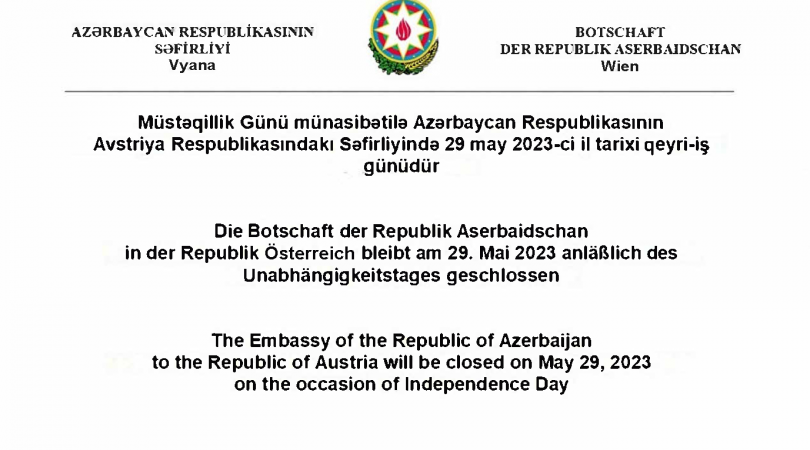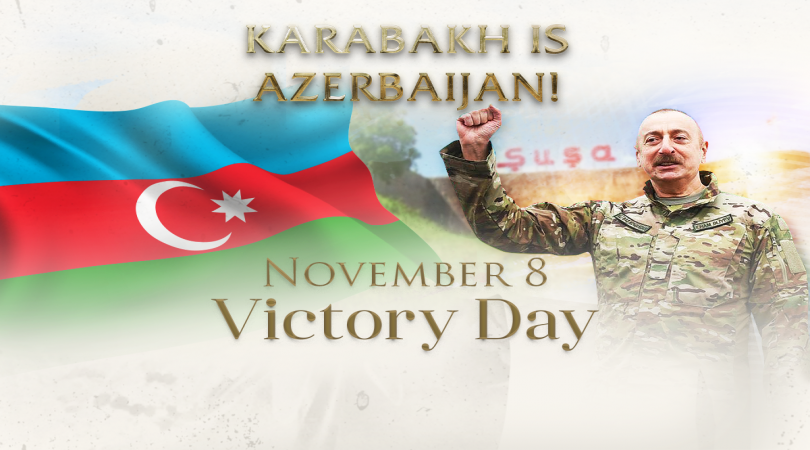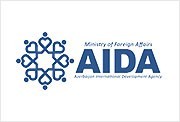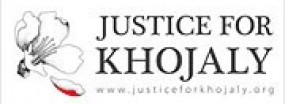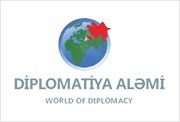Statement by the Delegation of the Republic of Azerbaijan on Aggression of Armenia against Azerbaijan and situation in the occupied territories of Azerbaijan, 1285th Meeting of the Permanent Council, 16 October 2020
Aggression of Armenia against Azerbaijan and situation in the occupied territories of Azerbaijan
Mr. Chairperson,
The Delegation of Azerbaijan would like to update the Permanent Council on the aggression of Armenia against Azerbaijan and its consequences as well as situation in the occupied territories of Azerbaijan in the reporting period since the last meeting of the Permanent Council on 8 October.
It is utterly deplorable that despite the agreement on a humanitarian ceasefire, agreed during the meeting of the Foreign Ministers of the Republic of Azerbaijan and the Republic of Armenia in Moscow on 10 October with the mediation of the Russian Federation, the armed forces of Armenia continued direct and indiscriminate attacks against the civilian population and civilian objects in Azerbaijan along the frontline in a gross violation of its obligations under international humanitarian law, including the 1949 Geneva Conventions. It is apparent that Armenia’s alleged support for and adherence to the ceasefire is nothing other than utter falsehood and smokescreen. No doubt, Armenia’s objective is not to save lives and resolve the conflict peacefully, but to prepare for a new aggression under the disguise of a ceasefire.
Thus, immediately after the establishment of a ceasefire, the armed forces of Armenia opened artillery fire on Aghdam and Tartar districts of Azerbaijan. A few hours later, Armenian armed forces tried to launch an offensive in the direction of Hadrut and Jabrayil, in an attempt to recapture these territories, which were liberated from the Armenian occupation.
A medical worker was seriously injured as a result of the shooting by the Armenian troops of a sanitary medical vehicle with a visible distinctive sign, which was collecting the remains of the Armenian soldiers in the area of Sugovushan.
The desperate attempts of Armenia’s armed forces to reverse the losses and defeat of the Armenian armed forces on the ground continue to date.
It is particularly disturbing that right after the announcement of humanitarian ceasefire, on the night of 11 October, Ganja, the second largest city in Azerbaijan, came under missile attack. The city is situated approximately 40 km away from the frontline and 72 km from the missile launch point. came under rocket fire by the Armenian armed forces. It has been established that “SCUD” ballistic missile was launched from the Vardenis district of Armenia. As a result, 10 civilians were killed, including 4 women, and 34 civilians, including 16 women and 6 children were injured. Besides that, 10 apartment buildings and more than 100 other civilian facilities were extensively damaged in the city. This attack will go down in the history books as the first instance when a participating State used a “SCUD” ballistic missile to bombard the civilian objects on the territory of another participating State (Exhibit 1).
The same day, the city of Mingachevir, also situated far away from the frontline and 104 km from the border with Armenia, was subjected to missile attack by the armed forces of Armenia. The missile fell in close vicinity of the building of the Azerbaijan Thermal Power Plant, which is located in the Mingachevir Water Hydropower Complex, the largest water reservoir in the South Caucasus (Exhibit 2).
On 12 and 13 October, the Tartar, Aghdam, Aghjabadi, Goranboy and Tartar districts of Azerbaijan were shelled by missiles and artillery from various directions, causing civilian casualties and the destruction of civilian and public property. Since the morning of 14 October artillery fire by the Armenia’s armed forces continued against the Tartar city of Azerbaijan. As a result of this shelling, 1 civilian was killed, 6 were wounded (Exhibit 3).
In the morning of 15 October 2020, as a result of deliberate attack of Armenian armed forces on a graveyard in Tartar city of Azerbaijan 4 civilians were killed and 4 wounded (Exhibit 4).
As a result of direct and indiscriminate attacks of the armed forces of Armenia against the cities, towns and villages in Azerbaijan, as of 16 October 2020, 47 civilians, including children, women and elderly, were killed, 222 civilians were wounded, 1669 private houses, 84 apartment buildings, 301 other civilian objects and 37 schools (12 in Tartar, 11 in Aghdam, 5 in Ganja, 4 in Fuzuli, 2 in Goranboy, 1 in Barda and 1 in Aghjabadi) were either destroyed or damaged (Exhibit 5).
Hastily organized covert arms supply to Armenia from the CIS and Middle Eastern countries prove that Armenia is preparing for new offensive operations. Admission by the Armenian side of deployment of so-called “volunteers” to the combat operations attests to Armenia’s recruitment of foreign terrorist fighters (FTFs) and mercenaries. Despite ongoing COVID-19 pandemic, significant increase is being observed in flights to Armenia. This includes both regular flights to Armenia, as well as from those places where there have never been flight to Armenia. Via these routes mercenaries and FTFs are brought to Armenia and then deployed to the occupied territories of Azerbaijan in order to fight against Azerbaijan and organize terrorist activities against Azerbaijani civilians. Over the last days, four flights have been conducted from Suleymaniyah (Iraq) with Boeing-757 and Airbus-320 aircrafts. Given the capacity of these planes, it can be assumed that at least 1200 mercenaries have already been brought from Iraq only. Moreover, over the recent days, flights have been conducted to Armenia from Cabo Verde, an island in the Atlantic, where perhaps no one ever heard about Armenia. In most cases, the Government of Armenia and Armenian Diaspora organizations organize special campaigns, including fundraising and ticket sales and define assembly points for the mercenaries.
We reiterate once again that the OSCE participating States, in whose territories these activities are carried out or financed also bear responsibility and are under the obligation to prevent mobilization of foreign terrorist fighters and prosecute the travel or attempted travel abroad for terrorist purposes. In that regard, it is critical that the respective authorities of OSCE participating States, origin or transit, exercise due diligence in light of the increased intensity of travel by their nationals and residents to Armenia and undertake necessary preventive border control measures, as well as take all required steps to prevent their territories from being used for supporting or financing terrorist activities against the sovereignty and territorial integrity of Azerbaijan.
Armenia’s attacks directed at civilians, the murder and injuring of civilians and attacks that have caused indiscriminate or disproportionate harm to civilians and civilian objects in Azerbaijan amount to war crimes under international humanitarian law, for which Armenia bears liability and which also incur individual criminal responsibility of the perpetrators.
The Ministry of Defense of Azerbaijan confirmed that Azerbaijan’s Armed Forces do not conduct offensive operations and observe the humanitarian ceasefire. However, Azerbaijan has stated on numerous occasions that a ceasefire must be respected and implemented fully and unreservedly by both Armenia and Azerbaijan. One cannot demand to abide by a ceasefire to the extent it fits its interests, but ignore its violations when it is not. Azerbaijan remains committed to the terms of the humanitarian ceasefire, but will not sit idle and watch as Armenia continues to barrage the cities of Azerbaijan with ballistic missiles and artillery fire. The Armed Forces of Azerbaijan will continue taking adequate and proportionate measures to neutralize the legitimate military targets, including stronghold battle positions, in the exercise of right of self-defence and in full compliance with international humanitarian law. This was the case with the destruction on 14 October of operational-tactical rocket system of Armenia deployed in the border area near the occupied Kalbajar district of Azerbaijan to launch airstrike against civilian objects in Azerbaijan (Exhibit 6). There was no civilian infrastructure at the points where the missiles were brought to a state of readiness to deliver fire strikes.
We have continuously been drawing the attention of the OSCE community, in particular its Forum for Security Cooperation (FSC), to blatant and deliberate violations by Armenia of its commitments and obligations under OSCE politico-military instruments – specifically by illegally deploying its armed forces in the occupied territories of Azerbaijan, by taking advantage of the fragmentation of the zone of application of CSBM regimes to conceal its military potential from these arms control mechanisms, and by engaging in illegal massive military build‑up in these territories. We have presented on multiple occasions undeniable facts testifying to these egregious violations and repeatedly warned against the adverse effects of Armenia’s outright disregard of its commitments and obligations. The recent counter-offensive operation and the amount of weapons and hardware destroyed by our Armed Forces during the two weeks of active military operations revealed the scale of militarization of the occupied territories, which pursued the obvious goal to consolidate the unlawful occupation of the territories of Azerbaijan. Thus, as of 14 October Azerbaijani armed forces destroyed around 250 tanks and other armored vehicles, 420 artillery pieces, multiple rocket launch systems and mortars, 89 air defense systems, 2 S-300 anti-aircraft missile system, 16 command control and command observation posts, 8 ammunition depots and 168 military vehicles (Exhibit 7). 33 tanks of the armed forces of Armenia deployed in the occupied territories of Azerbaijan were captured. To compare, in the latest annual exchange of military information within the Vienna Document and CFE Treaty, Armenia declared to possess 145 tanks and 216 armored combat vehicles only.
The Armed Forces of Azerbaijan distinguish between the civilian population and combatants and make every possible effort to prevent harm to the civilian population, acting in accordance with international humanitarian law. On the contrary, Armenia’s actions are aimed at causing indiscriminate or disproportionate harm not only to Azerbaijani civilians, but also to the Azerbaijani citizens of Armenian origin residing in the occupied Nagorno-Karabakh region of Azerbaijan. While, the Ministry of Defense of Azerbaijan appealed on numerous occasions to the civilian population in the occupied territories to stay away from the combat zone, the Armenian side introduced restrictions on free movement in the occupied territories and prohibited male population of conscript age to leave this territory. Obviously, Armenia intends to use them both as manpower to continue aggression against the civilian population and infrastructure inside Azerbaijan and to use them as human shield, putting them in harms way. Moreover, the Armed Forces of Azerbaijan reported horrifying scenes from the territories liberated from occupation, where perished Armenian military servicemen were found with chained legs, apparently, not to leave the military positions.
I request that this statement be attached to the journal of the day.
Thank you, Mr. Chairperson.



